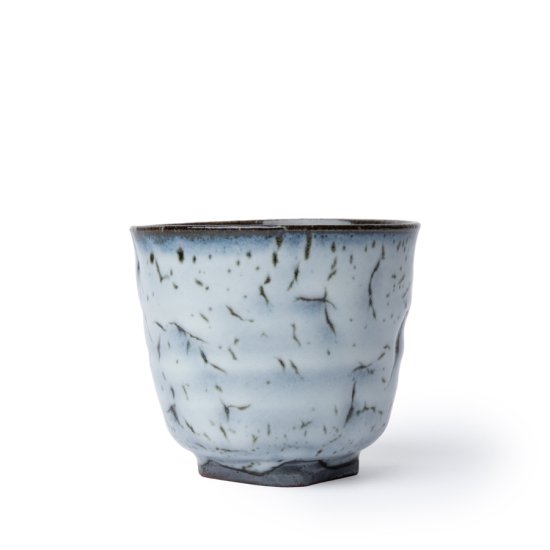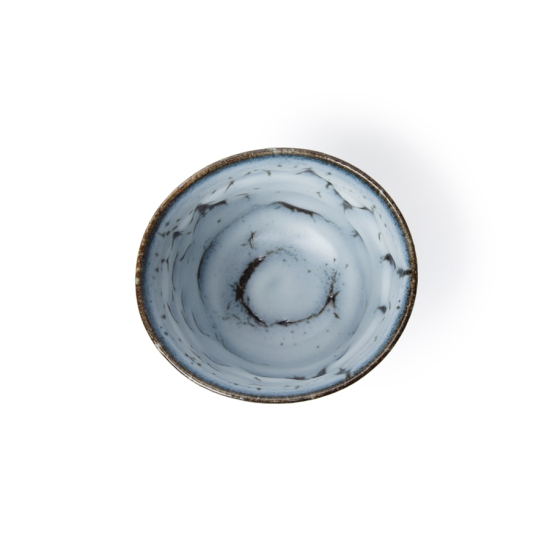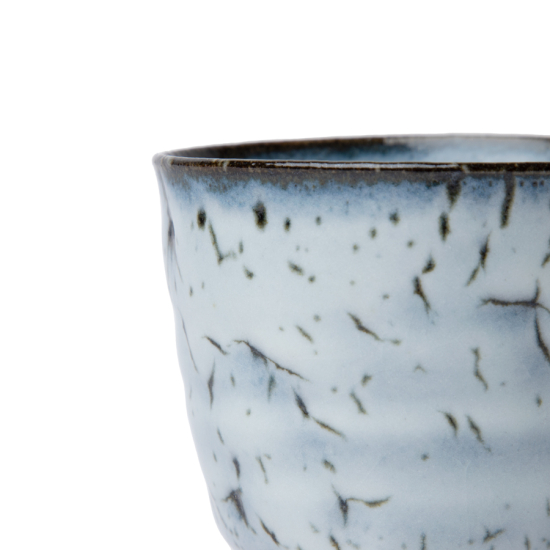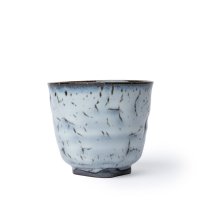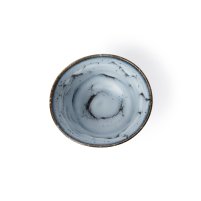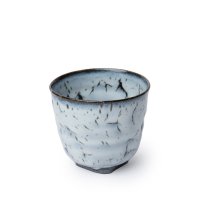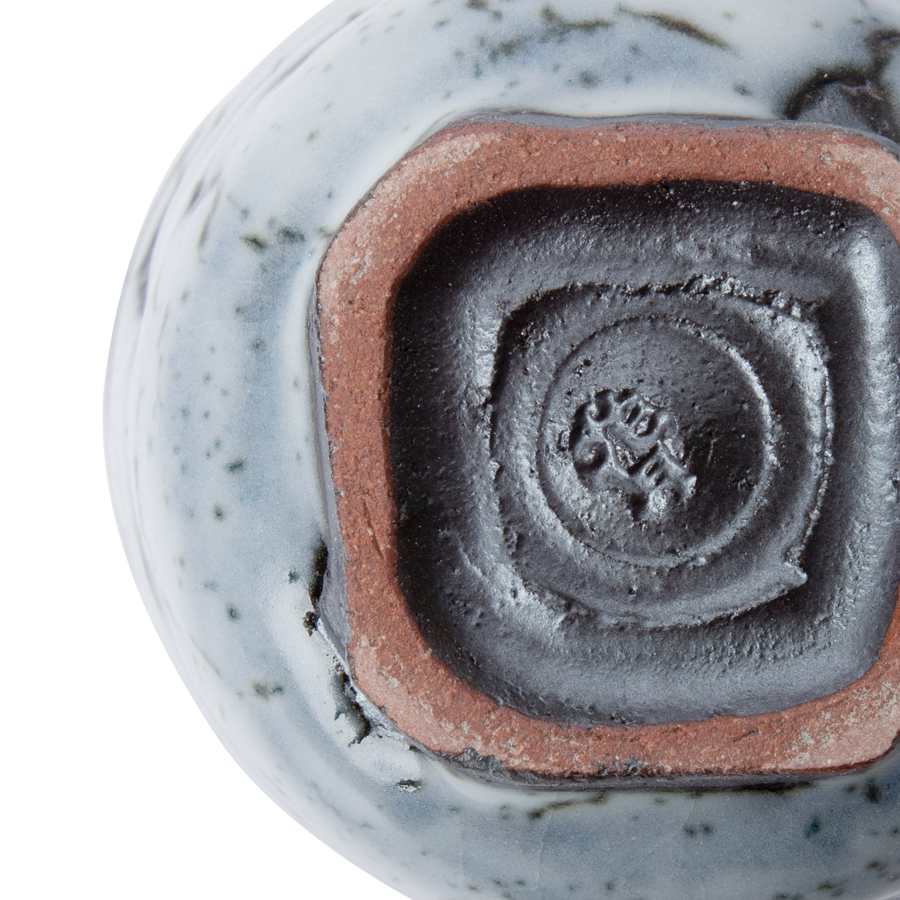Both Kyo- and Kiyomizu-yaki are general terms, often used together or interchangeably to refer to pottery produced in Kyoto, representing a variety of different styles. Historically Kiyomizu-yaki exclusively referred to pottery made on the road leading up to the ancient Kiyomizu Temple – now a UNESCO World Heritage site. Typical Kyoto wares are decorated with colourful hand-painted motifs using overglaze enamel pigments: a technique that appeared in the 17th century and is still a hallmark of Kyo-yaki today. From 794 to 1603 Kyoto was the imperial capital, attracting the most skilled artisans across the country. Even after the seat of government moved to Edo, present day Tokyo, Kyoto continued to be the cultural and spiritual centre of Japan.
Kairagi 梅花皮 / 鰄 glaze
Kairagi is the crawling glaze effect appearing on ceramics due to the glaze shrinking faster than the clay body. The characters can be written as either 梅花皮 “plum tree bark” or 鰄 “shark skin”, which allude to the cracked and textured surface of the glaze. This technique is often seen in Hagi and Karatsu wares, and particularly around the foot of Ido-style tea bowls. In chanoyu (茶の湯 “the way of tea”) kairagi is appreciated as a scenic element or keshiki (景色 literally “scenery”) and is paid particular attention to when viewing the tea bowl during the tea ceremony.



